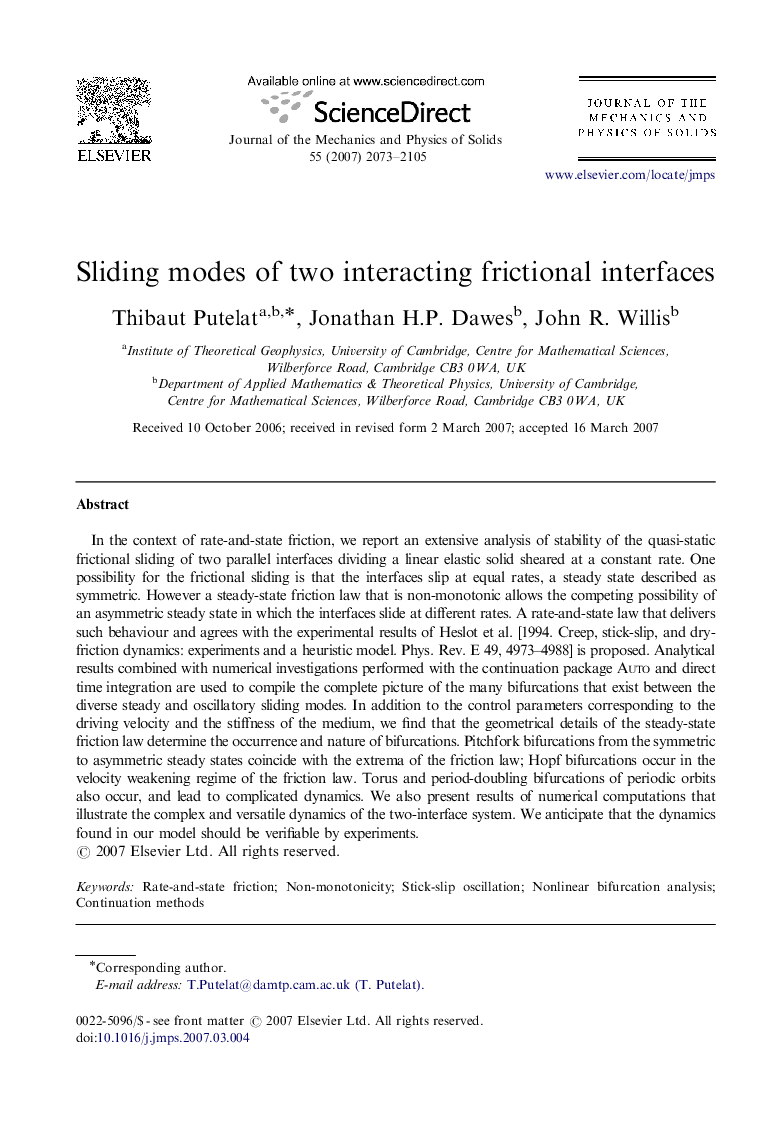| کد مقاله | کد نشریه | سال انتشار | مقاله انگلیسی | نسخه تمام متن |
|---|---|---|---|---|
| 797459 | 1467156 | 2007 | 33 صفحه PDF | دانلود رایگان |

In the context of rate-and-state friction, we report an extensive analysis of stability of the quasi-static frictional sliding of two parallel interfaces dividing a linear elastic solid sheared at a constant rate. One possibility for the frictional sliding is that the interfaces slip at equal rates, a steady state described as symmetric. However a steady-state friction law that is non-monotonic allows the competing possibility of an asymmetric steady state in which the interfaces slide at different rates. A rate-and-state law that delivers such behaviour and agrees with the experimental results of Heslot et al. [1994. Creep, stick-slip, and dry-friction dynamics: experiments and a heuristic model. Phys. Rev. E 49, 4973–4988] is proposed. Analytical results combined with numerical investigations performed with the continuation package Auto and direct time integration are used to compile the complete picture of the many bifurcations that exist between the diverse steady and oscillatory sliding modes. In addition to the control parameters corresponding to the driving velocity and the stiffness of the medium, we find that the geometrical details of the steady-state friction law determine the occurrence and nature of bifurcations. Pitchfork bifurcations from the symmetric to asymmetric steady states coincide with the extrema of the friction law; Hopf bifurcations occur in the velocity weakening regime of the friction law. Torus and period-doubling bifurcations of periodic orbits also occur, and lead to complicated dynamics. We also present results of numerical computations that illustrate the complex and versatile dynamics of the two-interface system. We anticipate that the dynamics found in our model should be verifiable by experiments.
Journal: Journal of the Mechanics and Physics of Solids - Volume 55, Issue 10, October 2007, Pages 2073–2105